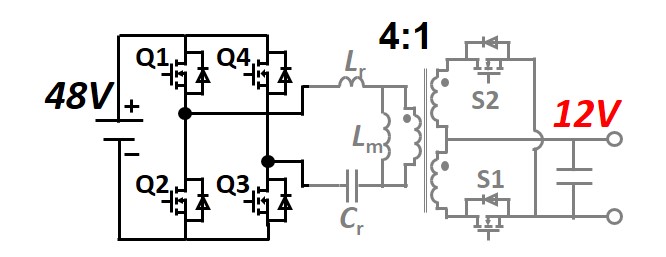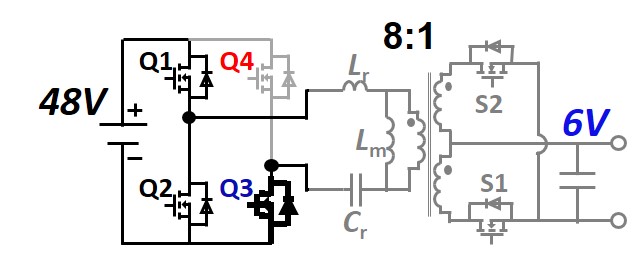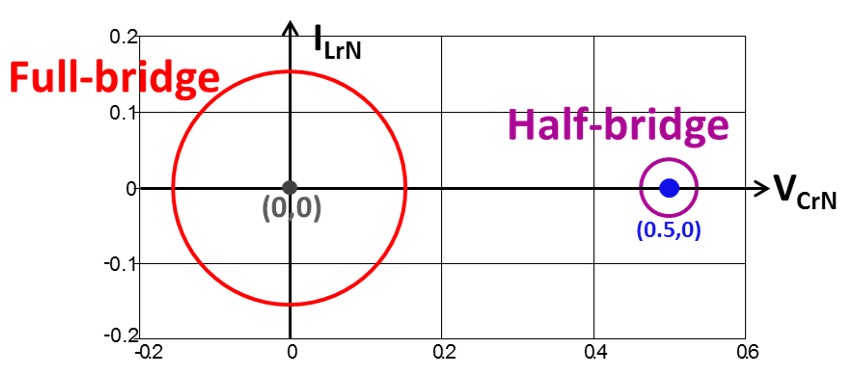LIBRARY
Dynamic Bus Voltage Control for Light-load Efficiency Improvement of Two-stage Voltage Regulator

This paper proposes to change the structure of the primary side from a full-bridge structure to a half-bridge structure dynamically in light-load conditions, so that the output of the LLC DCX can be changed from 12V to 6V, which increases the overall light-load efficiency significantly due to the reduced core loss of the LLC DCX and reduced switching loss of the multi-phase VR. To achieve the full-bridge operation shown in Fig. 1(a), the Q3 switch needs to be synchronized with Q1, and the Q4 switch needs to be synchronized with Q2. To achieve the half-bridge operation shown in Fig. 1(b), the Q3 switch needs to kept on all the time, and the Q4 switch needs to be kept off all the time. However, the control of the transient between the full-bridge and half-bridge is very challenging due the large dc bias in the resonant capacitor voltage, as shown in Fig. 2. Transition from one steady state to the other involves large energy changes. The fast dynamic changes can only be achieved using state trajectory control; in other terms, it controls the instantaneous energy of the tank. Details about how to control the transient is presented in the full paper.
Along with the concept proposed above, a two-stage 48V-12V/6V-1.8V structure with dynamic bus voltage control for LLC DCX is proposed. To achieve fast transition of the bus voltage between 12V and 6V, the minimum capacitance for the intermediate bus is investigated, and optimal trajectory control for transition between the full-bridge and half-bridge is proposed and verified by experiment. Greater than 10% light-load efficiency improvements are achieved, as shown in Fig. 3.























































































